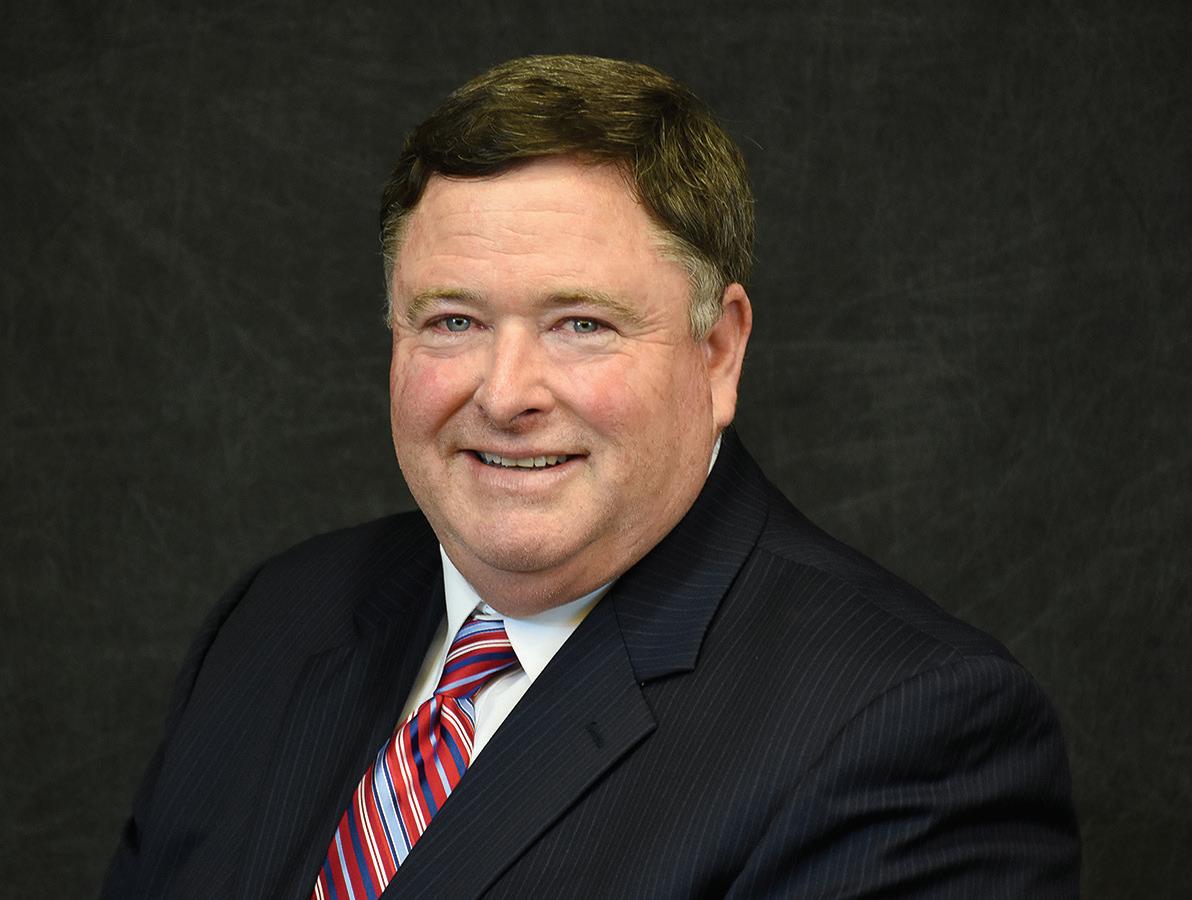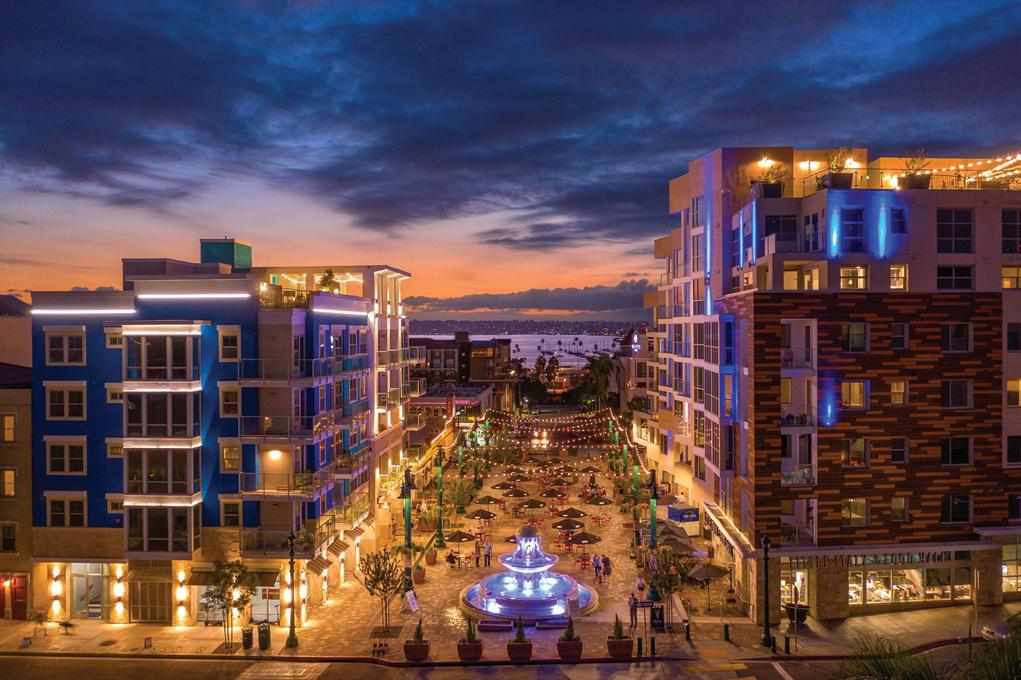
19 minute read
Moving from Open Offices Will Improve Acoustics
13
California Buildings News • Q2 2020
Moving from Open Offices Will Improve Acoustics Stressful Noise Is Workers' Biggest Challenge to Performance
By Greg R. Enenstein
While people transition back to working in an office, rather than from home, it feels appropriate to reevaluate and find ways to improve the office experience. As acoustical engineers, we are constantly contemplating ways to make offices healthier and more productive, all while maintaining the collaborative benefits of a physical office space. In order to take on this task, we must first accept that open offices face steep acoustical challenges. In fact, in surveys throughout the country, poor acoustics is often cited as the number one problem. The complaint of poor acoustics can be divided into two concerns: open offices are too noisy, and they don’t provide enough speech privacy.
Acoustical issues in an office can be particularly detrimental to a work environment. A study at Cornell University showed that exposure to constant low-intensity noise in an open office setting can be result in increased stress levels and decreased motivation (Evans, Johnson, 2001). Another study at the University of Nebraska showed that exposure to irritating or unpleasant background sounds can decrease performance and problem-solving abilities (Errett et al, 2006). So, if we are looking for productive, healthy, and happy workers, accounting for acoustics at open plan offices is truly crucial.
Acoustical consultants have been working on ways to quantify, model and recommend improvements to alleviate these issues for decades. An excellent summary of some approaches to reduce distractions, including office zoning strategies, can be found in GSA’s 2011 Sound Matters. At Salter, we have worked on over 500 projects where we have analyzed and made recommendations to improve speech privacy in open plan offices. This process can start with performing measurements in the physical offices to quantify performance with some technical engineering metrics including Noise Criteria (NC), Reverberation Time, and Privacy Index (PI).
After using an assortment of computer modeling tools to process the measured data, recommendations are developed. In other cases, we have modeled these metrics during the design phase to help with decisions before the space is built. Overall, in order to make an open office space less noisy and simultaneously increase speech privacy, it will take a combination of improvement strategies to meet a target performance. These core strategies can be summarized as follows: provide appropriate background noise levels, limit the reverberation time, incorporate barriers, and modify the layout.
Provide appropriate background noise levels
Often, open office spaces rely on mechanical systems to provide ambient noise levels. Unfortunately, mechanical systems are not always consistent. When they are off or on low speeds, noise levels will be lower than when operating under a full load. Since speech privacy is a function of background noise levels, it is easier to overhear conversation when an environment is quiet. Therefore, it is important to not only design mechanical systems to appropriate background noise levels, but also maintain these appropriate background noise levels. This can be accomplished by incorporating electronic sound masking. Electronic sound masking usually consists of a system of speakers within a ceiling, or suspended from the ceiling, that subtly boost background noise levels by playing white noise, or another spectrum of sound. Sound masking can reduce distractions, as well as improve speech privacy. (Continued on page 32)
With Super SAM 125 ®
your neighbors
aren’t that LOUD.
Sound Abatement Membrane
Super SAM ® 125 is a premium sound deadening sheet membrane for use on surfaces that require impact and airborne sound reduction. 6” concrete substrate with a tile finished floor: IIC: 51 STC:54 ΔIIC: 22
6” concrete substrate with engineered hardwood finished floor: IIC: 51 STC: 52 ΔIIC: 23
Wood joist substrate with tile finished floor: IIC: 56 STC: 61
Super SAM ® 125 provides up to 3/8” of crack isolation protection.
The perfect solution for apartments, condominiums, hotels, classrooms, high-rise office buildings and any other area needing sound reduction.
Membrane Systems That Protect Your Flooring Investment 1(800)633-4622 www.nacproducts.com
14
California Buildings News • Q2 2020
Sp o nso r e d Re p o r t
Cleaning vs. Disinfecting Surfaces—What’s the Difference?
by Raul Plascencia, Division Manager, RMC
The answer is: Cleaning does not equal disinfecting
surfaces, and disinfecting surfaces does not equal
cleaning. Here’s why! w Cleaning ONLY: Removes organic material (dirt, dust, debris, pollutants), but does not kill biological contaminants. Effective cleaning depends on products, equipment, and methods used to apply and remove cleaning agents. w Applying Disinfectant ONLY:
Organic materials (dirt, dust, debris, pollutants) inactivate disinfecting chemicals. Residual contaminants and pollutants are left behind on surfaces that are removed by cleaning first. w Deep Cleaning AND Applying a Disinfectant:
Addresses the new awareness of cleaning for appearance and for the health of building occupants.
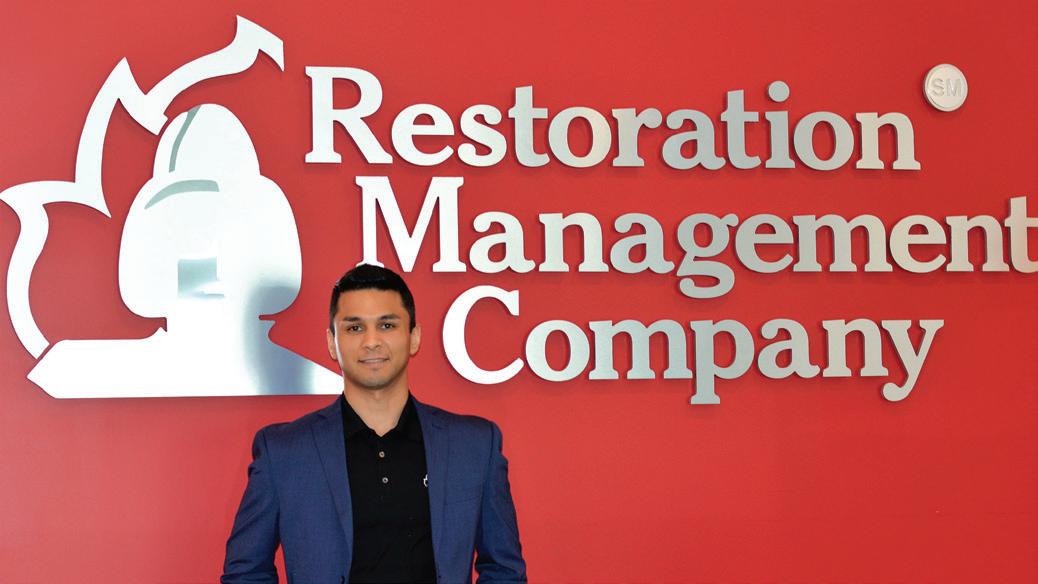
Cleaning and applying disinfectants is intended only for hard surfaces. Cleaning and sanitizing of soft surfaces uses different chemicals and application processes that do not harm material surfaces.
RMC offers levels of cleaning, application of disinfecting and sanitizing materials suitable for most surfaces depending on the level of cleaning, disinfectant, and sanitizing applications required to achieve a clean and healthy environment.
Please reach out to RMC when we may be of assistance to you and your tenants in providing an effective deep cleaning of your flooring systems and fabric furniture.
To learn more, contact RMC Division Manager Raul Plascencia at 510.427.0016 or rplascencia@rmc.com or visit at www.rmc.com.
www.NCCRC.org facebook.com/NCCRC www.CTCNC.org
A Carpenter crew assembling the pre-cut cross-laminated timber (CLT) panels at 1 De Haro Street, the first project in San Francisco to use CLT.

We’re on it.
15
California Buildings News • Q2 2020
Hotels During and After COVID-19
Expect Enhanced Sanitary Procedures
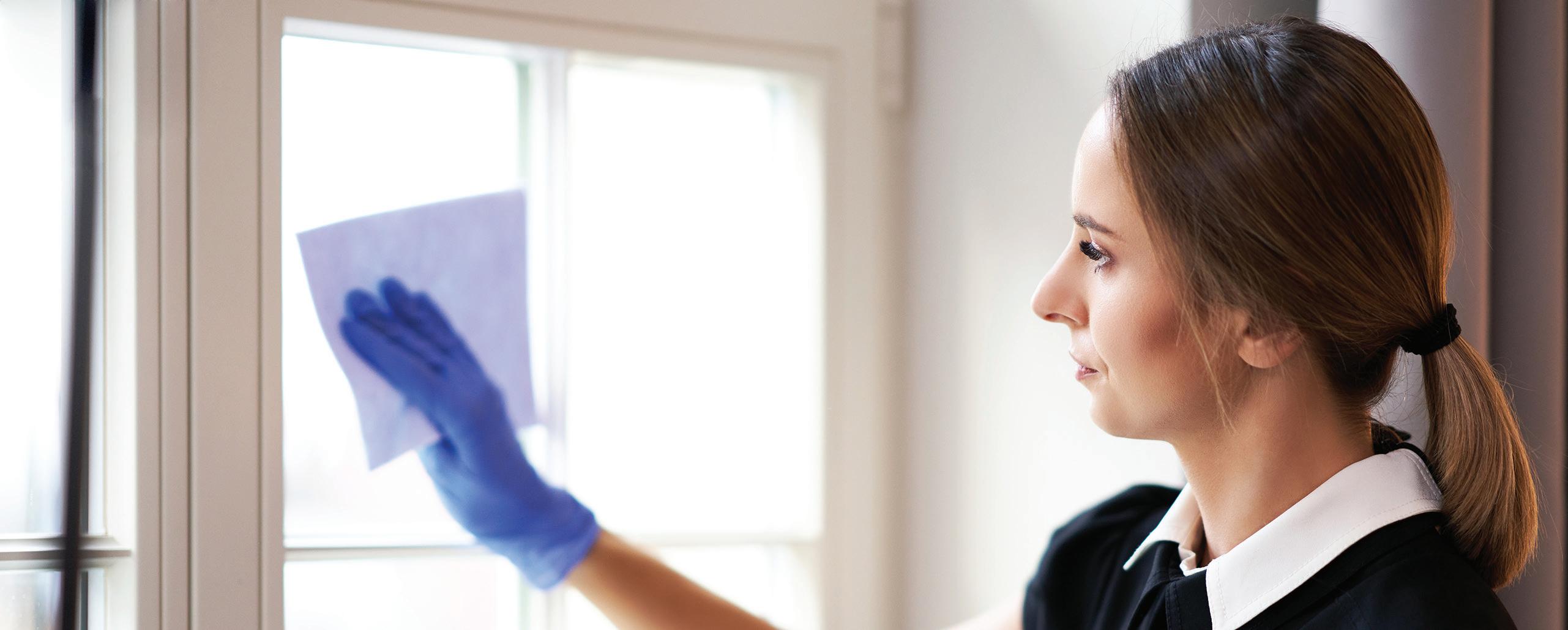
By Bob Eaton, Founder, Eaton Hotel Investments H otels exist to meet the needs of the traveling public. With the current COVID-19 pandemic sweeping the globe and large-scale public mitigation efforts underway, there are virtually no traditional travelers. Hotels no longer have a need to satisfy. Traditional travel for business or leisure has been halted based on personal health concerns and the need to stabilize the infection.
The consequences of this COVID-19 virus are economically devastating in the short run to the current hotel business model but could have far reaching consequences for the future of hotels generally. The hotel market has experienced the impacts on travel events before with natural disasters, such as 9.11 and hurricanes. The responses to these travel events could all be characterized by their goals being recovery to “normal,” however long it may take. Whether an earthquake in San Francisco or a hurricane in Florida, the planning and recovery were to “normal.” The intrinsic reasons for travel to any specific destination still existed generally after the event. There could be major loss and extensive work to do with infrastructure, marketing, and rebuilding; it took time, but markets and the hotel business generally came back. This pandemic event is unique, and it is uncertain now what “normal” will become in the inevitable recovery.
Considering the actual hotel building or structure, there will likely be some changes mandated by the market and post-virus travelers. Most of the major brands have a “clean” room program that highlights air purification and filtration, added sanitation, microfiber bedding, etc. These programs will become brand standards and ultimately hotel standards adopted by all lodging facilities. These standards enforced will give the travelling public comfort in knowing the accommodations being used are extraordinarily clean.
The limited amounts of extra-clean rooms have been featured at a number of hotels but only on a limited location basis; they are often referred to as allergy-free. Hyatt in 2010 introduced Respire rooms which are sterilized, sanitized, antisepticised, and deodorized to the extreme. They are so clean you're unlikely to find so much as dust mite feces under the decorative pillow shams.
The hotel that wanted some enhanced rooms would generally absorb the cost of an up-grade to a super-clean room. It could vary upwards from $3,000 to $20,00 per room and under the past business model the hotel could then expect a premium rate for that ultra-clean room. An example is Marriott’s PURE Room. It is featured in some Residence Inn properties and is described: w Asthma and allergy sensitive travelers notice a refreshing difference in a PURE room compared to a standard hotel room. w The air is completely circulated at least 4 times per hour filtering out 99% of impurities found in the air. w In a PURE room, all bedding and pillows are encased in a protective and comfortable covering that is moldproof, spore-proof, hypoallergenic, dust-proof and dust mite-proof. w A PURE room eliminates 98-99% of viruses and bacteria found in the environment. w A PURE room has no offensive or strong odor for the sensitive nose. w A PURE room is re-certified every 6 months to ensure the room remains PURE. w The air is continuously circulated and filtered allowing the purest air available to you. w The air quality is healthier for you and your family.
16
California Buildings News • Q2 2020
Hotels After COVID-19 (Continued from page 15)
w There is an in-room air purification system that is recognized as a Class II medical device by the FDA. This filters the air around you continuously. w A PURE room provides the freshest air, giving you peace of mind and utmost comfort. w In a PURE room you have entered a PURE-LY refreshing environment that caters to every traveler that cares about the air they breathe.
Similarly, the Hilton PURE rooms feature in-room filtration systems that remove air particles, while surfaces are treated to minimize the growth of bacteria. These hypoallergenic hotel accommodations are nearly 99.9% allergen-free and include: w Sanitized heater and air conditioner, further treated with
PURE Tea Tree Oil w Cleansed and sanitized soft surfaces, to eliminate contaminants that trigger allergies w PureShield application on all surfaces, to minimize the growth of bacteria w One-time shock treatment, to remove any remaining allergy triggers, and to eliminate room odors w In-room medical grade air purification system, with up to 5 levels of filtration for maximum air quality w Microfiber pillowcases and mattress covers, to eliminate dust and dander associated with bedding
Your commercial IPM/Green/LEED specialists
Count on Crane for Pest Management Expertise
Serving commercial property managers throughout the Greater Bay Area...since 1930 NPMA GreenPro Certified
415-922-1666 • 510-536-1222 408-295-3333 • 800-592-7777 www.cranepestcontrol.com
The rationale was that someone particularly concerned about cleanliness, allergic reactions, breathing, etc., would pay the premium of say $30+/night. These “clean” rooms may soon become standard for the industry and, of course, the brands. It will be an expensive capital investment in all hotel properties and done simply to attract traditional travelers not just a minority of sensitive travelers. It will be led by the brands and they will set the standard, the independents will then follow. Not good news for hotel owners. Not only will there be a significant capital investment, but the management team will require training in these new standards. There will likely be some winners and some losers in the near term and only time will tell what other lasting effects this may have on our travel and facilities used for overnight lodging.
If this upgrading comes to pass, it will be interesting to see the impact on Airbnb, the uber hosting affiliation. Will the individual unit owners and their hosts be willing to invest in these newly demanded standards? Is it possible to receive a sufficient certification of cleanliness? Will the traveling public deeply discount the Airbnb accommodations booked without the new cleanliness standards?
The good news for hotels is this could serve as the distinguishing marketing factor to be employed in competing for the traveling public business against Airbnb and someone’s vacation condo.
Alternative uses for hotels may come into play. For instance, New York is speculating that as many as 10,000 hotel rooms will not re-open as hotel rooms. The obvious alternative use might be residential. We recently learned of a 700-room independent hotel that has closed permanently and will be converted to office uses. It is conceivable that a hotel, as we know it now, could morph into some hybrid office/hotel/residence facility. These adaptations will be played out differently in a dense urban market vs. a suburban setting, but it will happen in both.
The impacts on hotel closures will be felt particularly hard by the local municipalities which derive a significant revenue stream from collection of Transient Occupancy Taxes (TOT). San Francisco, for example, collects approximately $500 million per year for its general fund. Changing a use may make market sense; however, local authorities may resist the change as well as other stake-holders like employee unions.
The demand for transient lodging is strongly correlated with GDP. This diminished GDP will produce less travel and industry experts expect 3-to-5 years for any return to 2019 levels. Travel for business or leisure will need to return convincingly for the majority of hotels to survive. Those that do survive the re-opening will do so with a much cleaner uncontaminated guest room. n
17
California Buildings News • Q2 2020
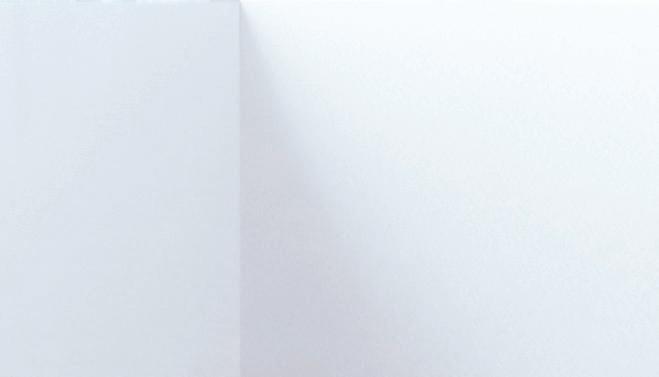


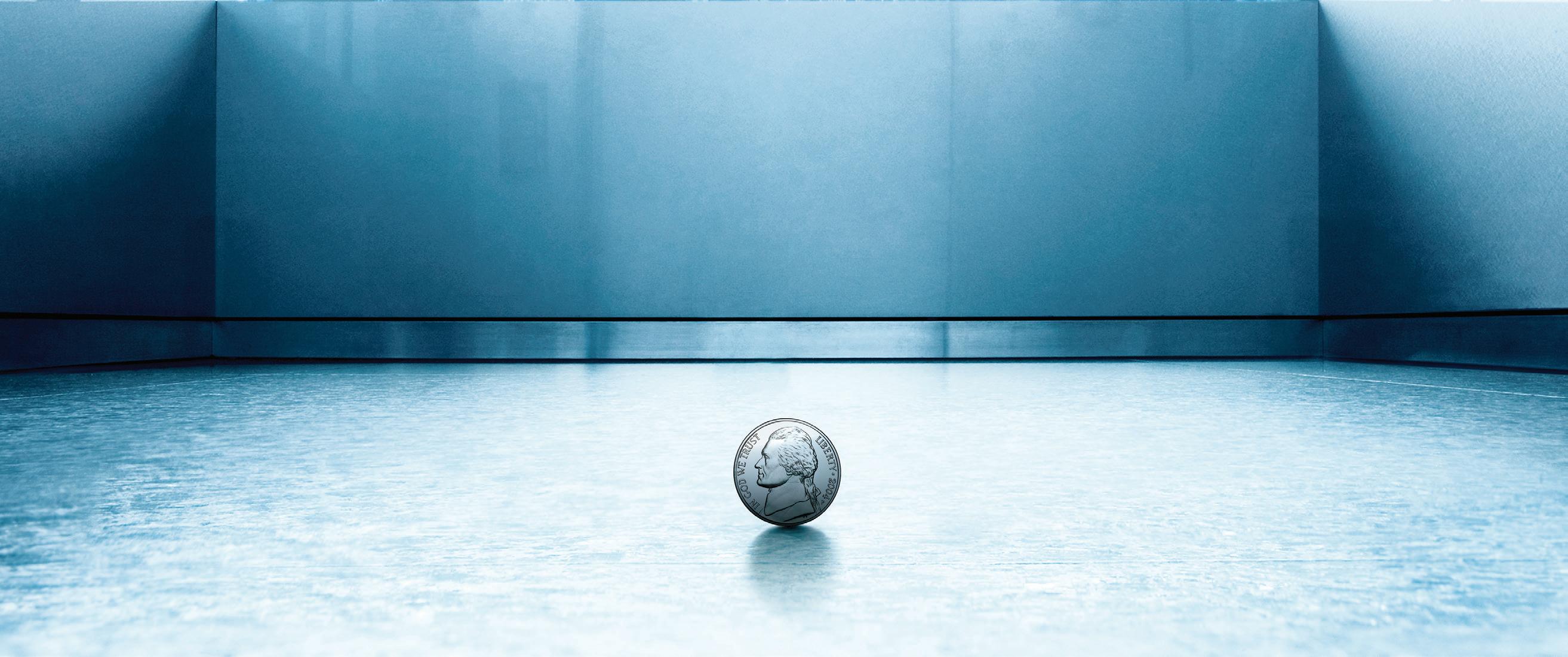
ELEVATORS THAT RIDE SO SMOOTHLY a coin on its edge won’t fall
Delivering the world’s highest standards in elevator and escalator innovation, effi ciency, safety and comfort are hallmarks of Mitsubishi Electric Elevators & Escalators. With a global reputation for smooth and sophisticated transportation due to ingenious engineering, energy-effi cient motors and carefully selected quality materials, our Quality in Motion™ delivers an experience that is unmatched.
To learn more, visit MitsubishiElevator.com
© 2020 Mitsubishi Electric US, Inc.
Cleaning Your Building: Facts vs. Myths
Useful observations from a webinar sponsored by the
Association of Facilities Engineers Santa Clara chapter
conducted by David Brinkerhoff of Forensic Analytical Consulting Services in Hayward and Wayne Whitzell of DFS Green in Foster City. w Surfaces wiped with cleaning materials are not immediately effective. It takes from 4 to 10 minutes for solutions to kill COVID-19 viruses after disinfectants are applied. w Product claims made by many manufacturers of
“anti- microbial” surface products purporting to neutralize COVID-19 have not been authenticated in peer- review studies. Safer to use EPA-registered disinfectants. w Contaminated toilets flushed without protective lids can circulate COVID-19 fecal material within stalls of public bathrooms. w Some cleaning solutions misted or fogged can cause respiratory problems for facility engineers

and anyone else within breathing areas. Disinfectants are not green. w UV light treatment is not a practical anti-COVID-19 solution for office situations, since its intensity can cause skin damage. w People changing HVAC filters should probably wear
N-95 masks and gloves, especially in healthcare environments. w No one knows how often surfaces in facilities should be cleaned, since it is not known how frequently surfaces have been contaminated. w Proper handwashing is the #1 most protective action needed—even more protective than hand sanitizers.
18
California Buildings News • Q2 2020
Industry Associations (Continued from page 5)
BOMA engaged with the San Francisco mayor’s office and relevant state officials through BOMA California to learn about health orders, eviction and nonpayment topics and relevant signage. And it joined a coalition comprised of other area business groups concerned with all aspects of commercial spaces. BOMA has provided useful webinars and even sought advice from BOMA members in China about how they are coping with the pandemic.
Michelle Malanca Frey, executive director, Urban Land Institute of San Francisco, says, “As we have moved our activities online, ULI San Francisco members have truly stepped up with creative ideas and new ways to connect, whether it be through webinars with industry leaders, virtual coffees and happy hours, or even group workout classes. We will always have education and information at the core of what we do, but the desire and ability of our members to help each other navigate their careers and lift each other up is equally as valuable.
“Times of big change and uncertainty shine a light on the importance of personal and professional networks, and this time is no different. ULI members are demonstrating that we are more than conveners and educators, more than a professional association—we are a support system.”
The Building Owners and Managers
Association of Greater Los Angeles
is offering numerous ways to keep its member connected and informed during the Coronavirus pandemic. Its membership director Desmond Brown identified the following:
BOMA/GLA Virtual Community Slack created a space on the communication app for members to connect with one another on general issues as well as providing a COVID-19 issue specific channel. Its webinars added new topics to its e-learning program. Recent topics included: team leadership and motivation, sexual harassw Increased communication through ment training required for California social media and direct emails— supervisors and proactively combating sharing tips, additional events and COVID-19 in your building resources
It created a Coronavirus Resource w Virtual happy hours (Cinco de Center with up-to-date webinar Mayo!) for networking and socializing recordings, documents, checklists and “I wish I could say we’ve got it all figuseful resources to help managers ured out, but we don’t! And, that’s OK. prepare their tenants and buildings. It’s a good time to try new things, get It offers an Associate Member Online feedback and try again. SMPS SFBAC Resource Center that publishes a is committed to keeping our members current list of associate members by connected, supported and educated, service type that are regardless of the open for business ready to serve the "The Talent Portal has also pandemic.” Other associaindustry. All this grown during the COVID-19 tions are making an can be found at the BOMA/GLA website: crisis, offering expanded effort to continue to perform their www.bomagla.org job listings and many core functions, such
Susie Smith, director of marcomplimentary webinars," as the U.S. Green
keting at Blitz is Ben Stapleton, USGBC-LA. Los Angeles. “One this year’s presiof the regular and dent of the Society popular offerings for Marketing of USGBC-Los Professional Services San Francisco Angeles chapter has always been tours chapter. Her members comprise comof exceptional green buildings. On munications and marketing professionEarth Day, in light of COVID-19, we als that serve the architectural, engidebuted our first such virtual tour, a neering and construction industry. It’s total success: Santa Monica’s new City a chapter of dedicated members, and Services Building, the first municipal it has on occasion won best chapter in Living Building project in the world. international competition, so it stands Set to open to the public that day, the to reason that its members would tour, with special guests, drew 200+ know who to respond in a crisis such viewers from around the globe, and is as COVID-19. now available for free on USGBC-LA’s
Smith says, “SMPS is a very supTalent Portal, www.usgbc-la.org. portive professional organization, and “The Talent Portal has also grown the only one specific to marketing and during the COVID-19 crisis, offerbusiness development for AEC. The ing expanded job listings and many SF Bay Area Chapter has a number of complimentary webinars. It held a strategies in place (and are working on special Quarterly Thought Leadership many more!) to care for our members program called ‘An Interim Event - in these unprecedented times. Reentry, Redesign, & Resilience.’ It w Weekly Stretch + Wave: a guided convened green building leaders to quick stretch and opportunity to discuss our response to the crisis, both casually connect as we return to work and look to the w Market Share: facilitated peer-to-peer future of building design and construclearning with a specific topic (April tion,” says Ben Stapleton, USGBC's was about the current craziness) executive director in Los Angeles. n
Building Council
19
California Buildings News • Q2 2020
Associations In COVID-19 Age: Pivot, Innovate, Repeat
By Julia Marin
Associations have traditionally been built on in-person interactions—networking events, educational classes, committee meetings, etc. Very quickly most of our tried and true methods of connecting with our members were no longer options when we experienced COVID-19. At first it seemed like we could put a temporary solution in place with online video conference services like Zoom. But as the shelter-in-place orders became long term, and as the reality of this crisis began to set in, solutions far beyond the occasional video chat became necessary to ensure associations remained relevant.
Our members are facing a crisis unlike anything they have seen before, which means our response to their needs must be unlike anything we have offered before. “Pivot, innovate, repeat” became our mantra as every member service we offer needed to be evaluated and restructured. Events
The purpose of events, regardless of format, is to bring people together in an engaging and fun atmosphere to allow for connections on a different level than you would get in a traditional business setting. This can still be achieved virtually, we just needed to get creative. Creating engaging events now includes sending out branded cocktail/mocktail recipe cards for attendees to make at home, custom-designed themed virtual backgrounds, and interactive games. Education
Our members still need access to quality content and taking education virtual allows for new opportunities to bring in instructors/speakers we may not have been able to offer before. National speakers and subject matter experts from around the country are now viable instructor choices for online webinars and trainings.
New timely content including how to successfully offer virtual property tours, how to manage teams remotely, reputation management during a pandemic, etc. are all being offered through formats accessible to all our members from the comfort of their home or office. Member Spotlights
Our service provider members need new ways to get in front of their current and potential customers. From coordinating small group video chats to incorporating vendor spotlights into our social media, we are focused on keeping our industry partners in the spotlight. Authentic Voice & Tone
Gone are the days of keeping our personal and professional lives separate. People are working from home, with their kids and pets as their new coworkers. Regardless of how important the meeting, there is a high likelihood that a dog or child will interrupt it. This is just the reality of the situation we are in and embracing it allows for a greater sense of community. Our members need to hear from us in an authentic and honest way; acknowledging that this is not ideal, while reassuring them that we are up to the task of meeting their needs despite the new challenges presented.
There is a comfort in knowing you are not alone, in feeling that you are part of something bigger than yourself. In a time of literal isolation, associations are more important than ever before as they are the embodiment of connection. People are members of associations to engage with their peers, to commiserate and to learn from and with each other. While the methods of delivery may be different, the mission of connection remains the same.
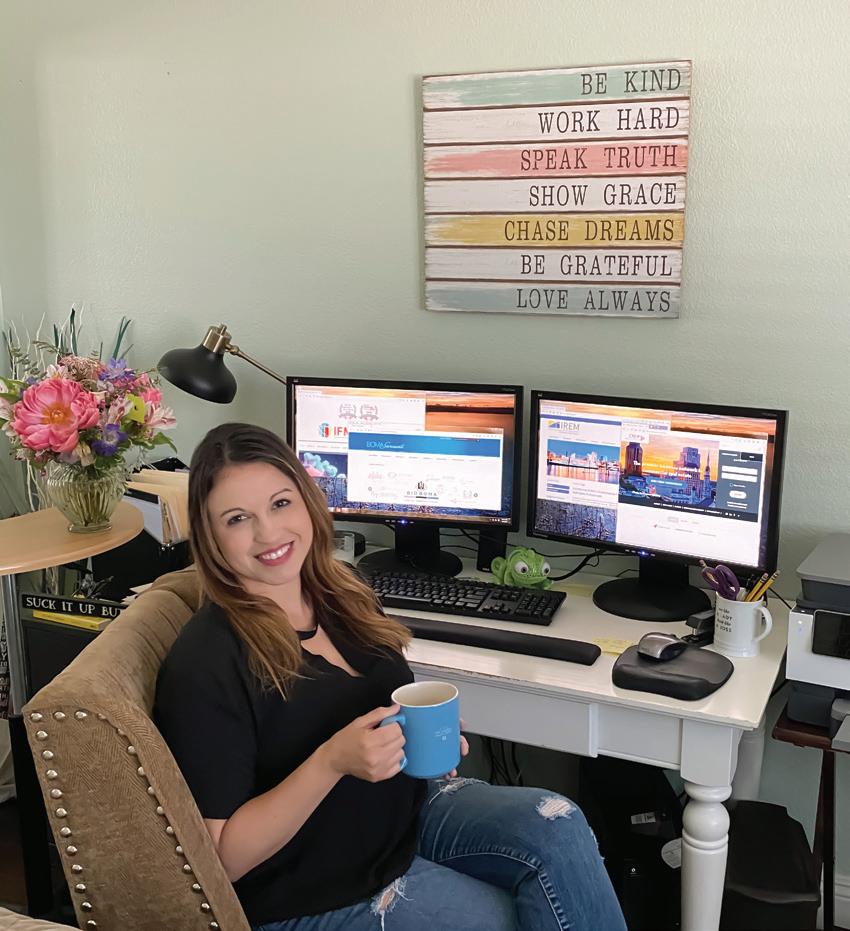
Marin is President/CEO of J. Elm Business Solutions, an association management and events planning company that manages California chapters of associations like the Institute for Real Estate Management of San Francisco and Sacramento, the Building Owners and Managers Association of Sacramento, the International Facility Management Association of Sacramento and CREW Sacramento.


